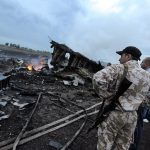Just recently, the capital city of the Philippines have been pounded by Tropical Cyclone Glenda. A number of buildings, houses, and commercial establishments have been terribly destroyed and washed out. This is not the first time Metro Manila have been lashed by a typhoon. The public are becoming more and more concerned of their safety.
One of the main problems that the city deals with is the continuous flooding. That is why the government took further steps to identify the “danger zones” to find out what causes continuous water overflow around the metro.
Danger zones are places where floods easily develop and go up fast. As we all know, rivers, waterways, and canals surround Metro Manila. The main purpose of these is to control the flood. Question is: Are they all working?
Danger Zones


Also included in the list are:
Estero de Pandacan, Manila – Considered as one of the most clogged area in the city. The houses completely closed up the waterway
Baseco Compound – The community lies along Manila Bay. Not only that. It is considered a reclaimed area
Marikina – We all know the damage of Typhoon Ondoy here. Many lives were taken and houses submerged in the flood. Usually, officials post this as a warning signal for people to evacuate the place.
As the people grow in numbers, so are the wastes that they throw around these areas, hence, the blocking of the waterways.
There are people who listen, there are others who don’t. Because of poverty, the residents that live in these danger zones continue to come back for only one reason: They do not have anywhere else to go. It’s’ either the relocation site is very far or there’s no relocation area at all.
References
- Reporter’s Notebook™ | July 17, 2014 FULL EPISODE:https://www.youtube.com/watch?v=siANGIqkctM
- Mga ‘danger zone’ sa Metro Manila, tinukoy ng MMDA:http://www.abs-cbnnews.com/video/nation/metro-manila/06/20/13/metro-manila-danger-zones-named




